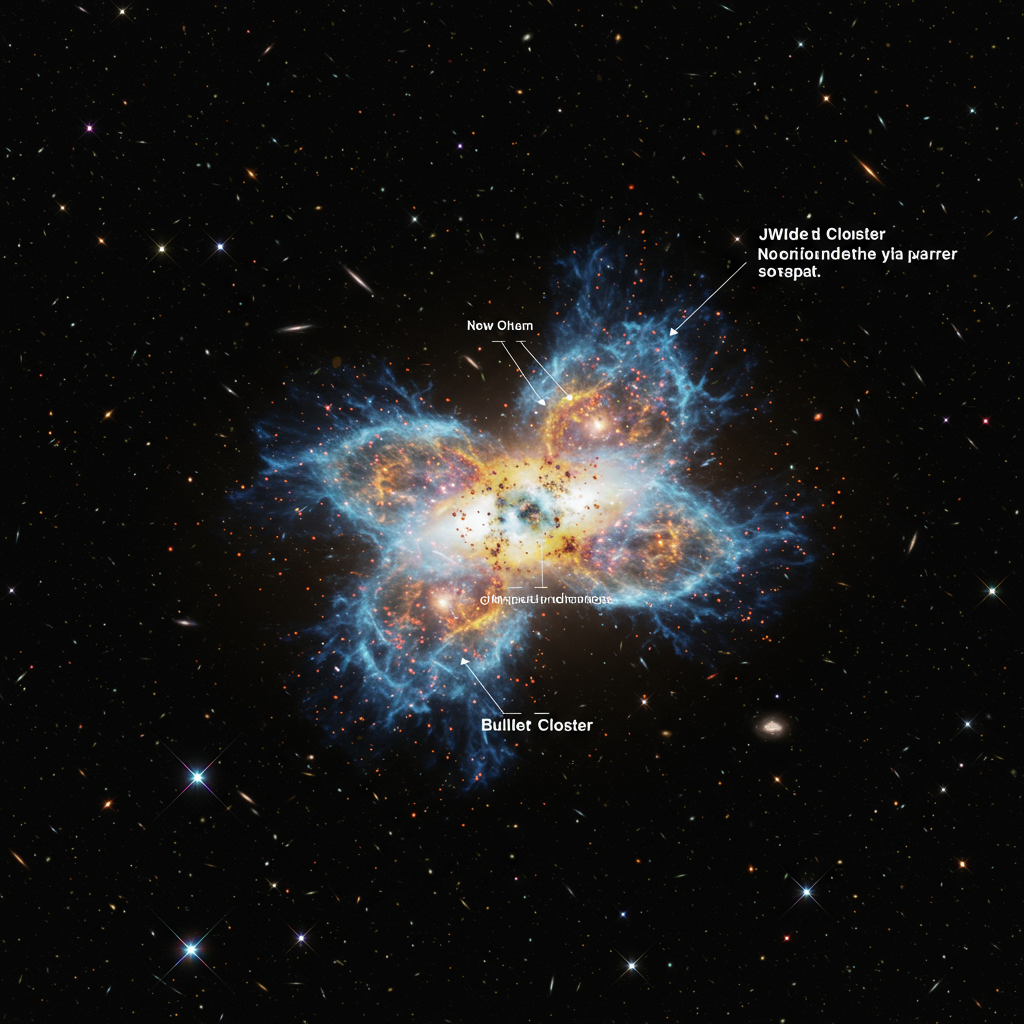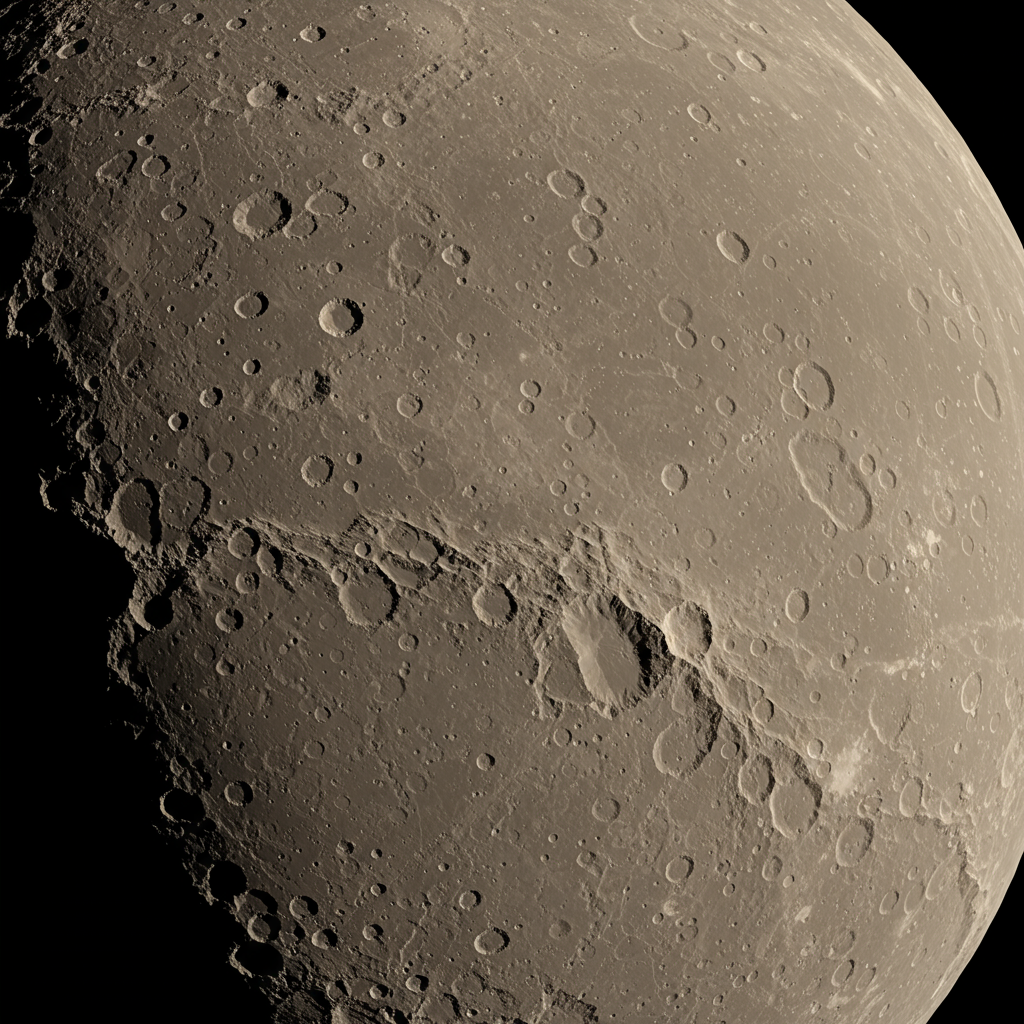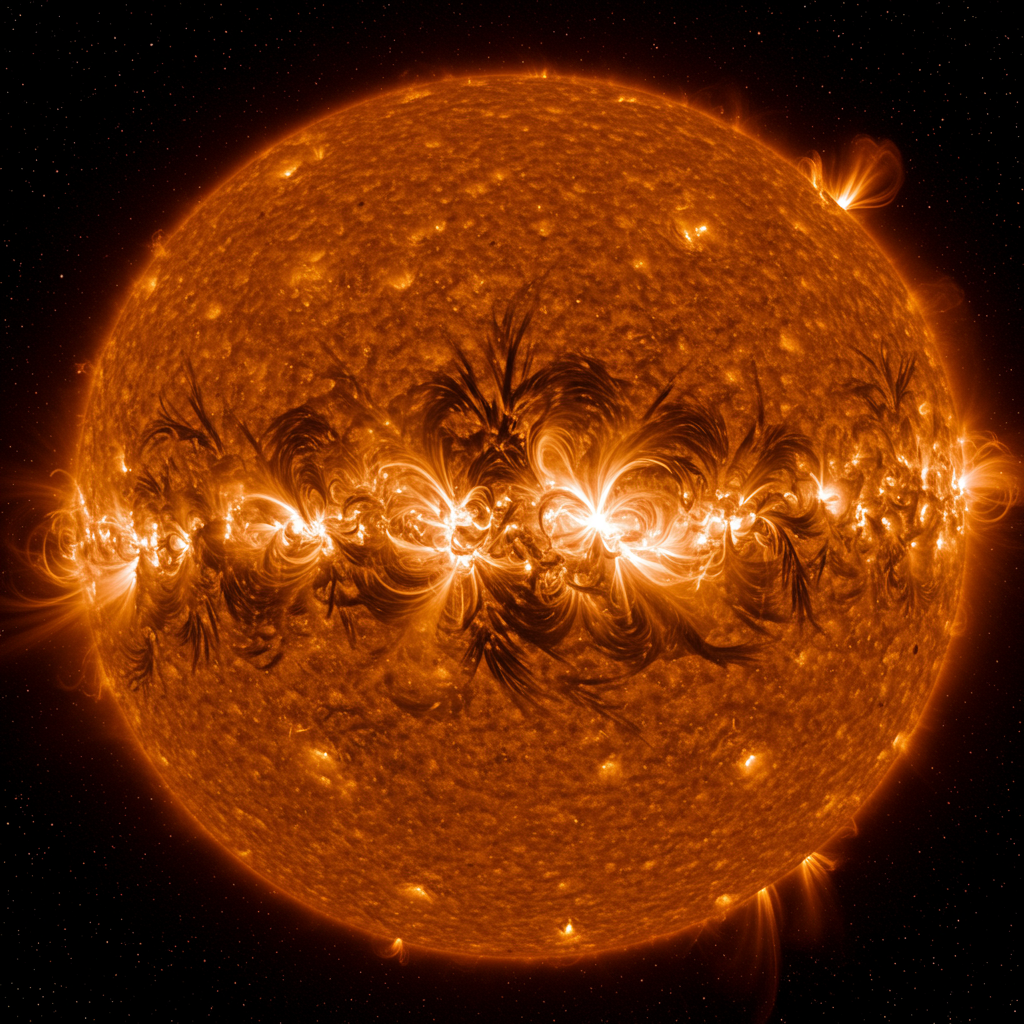A powerful new view of the famous bullet cluster is revealing deeper clues about the universe’s most enigmatic substance: dark matter. Captured by NASA’s James Webb Space Telescope (JWST) in collaboration with the Chandra X-ray Observatory, this image provides an unprecedented look at a titanic collision between two galaxy clusters located 3.9 billion light-years away. It’s a crucial step in humanity’s long quest to understand what dark matter is truly made of.
For decades, astronomers have known that visible matter – stars, galaxies, gas – makes up only a fraction of the cosmos. Pioneering work by astronomer Vera Rubin studying the Andromeda galaxy in the 1960s first showed that galaxies rotate too fast based on their visible mass alone. This groundbreaking observation led to the conclusion that an unseen, massive “dark matter” component must exist. It’s now understood that dark matter constitutes roughly 85% of all matter in the universe. Finding out its nature is one of science’s biggest challenges.
The Bullet Cluster: A Cosmic Laboratory
Galaxy cluster collisions serve as natural laboratories for studying dark matter. They represent the universe’s most massive pile-ups. When two clusters collide, different components behave differently. The hot gas within the clusters slams into itself. This interaction slows the gas down. It gets stuck near the center of the collision.
However, the galaxies themselves, and their associated dark matter halos, largely pass right through each other. This happens because the distances between galaxies are vast. And dark matter particles appear to interact with each other very weakly, if at all. This behavior suggests dark matter has a low “collisional cross-section.” Observing this separation in collisions like the Bullet Cluster is key evidence for dark matter’s existence and properties. Previous observations by the Hubble Space Telescope and Chandra in 2006 first highlighted this separation using gravitational lensing to map the dark matter. Gravitational lensing occurs when massive objects like dark matter bend the light from more distant galaxies.
JWST’s New Perspective
The James Webb Space Telescope brings unparalleled sensitivity and resolution to the study of cosmic phenomena. A team led by Ph.D. student Sangjun Cha and Professor James Jee used JWST to gain the best view yet of the Bullet Cluster. Their goal was to create a more refined map of the matter distribution. This map combined JWST data, showing the inferred location of dark matter in false-color blue, with Chandra’s X-ray data, highlighting the hot gas in false-color pink. The striking separation between the blue (dark matter) and pink (gas) is immediately apparent.
One unique aspect of this research involved using JWST to detect light previously unseen. The telescope identified the combined glow from billions of “intracluster stars.” These are stars that have been stripped from their parent galaxies during the violent collision. They now float freely in the space between the galaxies. The distribution of these lost stars closely mirrors the distribution of the dark matter. By mapping these stars with JWST, the team could trace the dark matter’s precise location with greater accuracy than ever before.
Unveiling Unexpected Dark Matter Structures
The improved map from JWST delivered some surprises. In the larger of the two colliding sub-clusters, located on the left side of the image, the dark matter displayed an unexpected shape. Instead of a smooth, roughly spherical halo, it appeared elongated. It formed a distinct “hammerhead” structure. This refined view showed the elongated mass was further resolved into smaller clumps. These clumps were centered on the brightest galaxies within that sub-cluster.
According to Professor Jee, this specific shape isn’t easily explained by a simple, direct collision like the one forming the Bullet Cluster itself. The researchers propose an intriguing hypothesis to account for this structure. They suggest that this larger sub-cluster likely underwent its own prior collision and merger event. This earlier cosmic pile-up would have happened billions of years before its encounter with the second cluster to form the Bullet. Such a ancient merger would have stretched and distorted the dark matter halo over time, resulting in the elongated form JWST observed.
The Mystery That Lingers
Despite these remarkable new insights into dark matter distribution and potential history, one major puzzle surrounding the Bullet Cluster persists. The estimated velocities at which the two galaxy sub-clusters are colliding appear surprisingly high. Standard cosmological simulations struggle to fully account for these speeds.
“Even with these updates,” Jee stated, “the required collision velocity remains high relative to expectations from cosmological simulations. The tension persists and remains an active area of research.” This ongoing discrepancy might hint at gaps in our current understanding of cosmology or dark matter itself.
Constraining Dark Matter’s Nature
Understanding dark matter is paramount to comprehending the universe. It makes up over a quarter of the total mass and energy. Its gravitational influence shapes cosmic structures, from galaxies to the largest galaxy clusters. Learning about its properties, particularly its collisional cross-section and the cause of these high collision velocities, is essential.
While the JWST observations of the Bullet Cluster alone can’t definitively pinpoint what dark matter is made of, they are invaluable. They help tighten the constraints on the upper limit for dark matter’s interaction strength. This narrows down the list of possible particle candidates. Astronomers are actively studying many other galaxy cluster collisions. Observing these events from different angles and distances will further refine these estimates. Coupled with data from direct dark matter detection experiments, like LUX-ZEPLIN deep underground, these astronomical observations push us closer to solving one of science’s greatest mysteries: the true identity of dark matter. The detailed findings from the JWST Bullet Cluster study were published in The Astrophysical Journal Letters on June 30.
Frequently Asked Questions
What new detail about dark matter did JWST find in the Bullet Cluster?
The James Webb Space Telescope (JWST) revealed the precise distribution of dark matter in the Bullet Cluster. It found that the dark matter in the larger sub-cluster has an elongated, “hammerhead” shape. This structure, traced by detecting light from free-floating intracluster stars, suggests the sub-cluster experienced a prior merger event long ago.
How did astronomers use JWST to map dark matter in the Bullet Cluster?
Astronomers utilized JWST’s sensitivity to detect faint light from “intracluster stars.” These are stars ejected from their galaxies during the collision. The distribution of these stars closely follows the distribution of dark matter. By accurately mapping these stars with JWST, the team created a high-resolution map of the dark matter’s location, complementing data on hot gas from Chandra.
Why is the Bullet Cluster collision so important for studying dark matter?
The Bullet Cluster is crucial because it’s a massive collision between two galaxy clusters. This event naturally separates dark matter from ordinary gas. The gas interacts and slows down, while dark matter appears to pass through largely unimpeded. Observing this behavior allows astronomers to test models of dark matter and measure how weakly its particles interact with each other.




